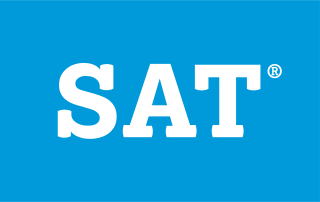
The SAT is a standardized test widely used for college admissions in the United States. Since its debut in 1926, its name and scoring have changed several times. For much of its history, it was called the Scholastic Aptitude Test and had two components, Verbal and Mathematical, each of which was scored on a range from 200 to 800. Later it was called the Scholastic Assessment Test, then the SAT I: Reasoning Test, then the SAT Reasoning Test, then simply the SAT.

The No Child Left Behind Act of 2001 (NCLB) was a U.S. Act of Congress promoted by the presidency of George W. Bush. It reauthorized the Elementary and Secondary Education Act and included Title I provisions applying to disadvantaged students. It mandated standards-based education reform based on the premise that setting high standards and establishing measurable goals could improve individual outcomes in education. To receive federal school funding, states had to create and give assessments to all students at select grade levels.
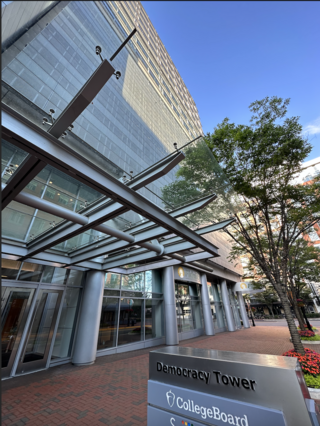
The College Board, styled as CollegeBoard, is an American not-for-profit organization that was formed in December 1899 as the College Entrance Examination Board (CEEB) to expand access to higher education. While the College Board is not an association of colleges, it runs a membership association of institutions, including over 6,000 schools, colleges, universities, and other educational organizations.
Spanaway Lake High School is a high school in Spanaway, Washington, for grade levels nine through 12.
Adequate Yearly Progress (AYP) was a measurement defined by the United States federal No Child Left Behind Act that allowed the U.S. Department of Education to determine how every public school and school district in the country was performing academically according to results on standardized tests. As defined by National Council on Measurement in Education (NCME), AYP was "the amount of annual achievement growth to be expected by students in a particular school, district, or state in the U.S. federal accountability system, No Child Left Behind (NCLB)." AYP has been identified as one of the sources of controversy surrounding George W. Bush administration's Elementary and Secondary Education Act. Private schools were not required to make AYP.

Wyomissing Area Junior/Senior High School is a secondary school serving the Wyomissing Area School District. Located in the borough of Wyomissing, Pennsylvania, United States, the school has approximately 900 students in grades seven through twelve. WAHS has been included in Newsweek's list of top 1,200 public high schools in the United States annually since 2006.
The Colorado Student Assessment Program (CSAP) was an assessment required by the No Child Left Behind Act administered by the Unit of Student Assessment in the Colorado Department of Education (CDE). The CSAP was designed to measure how well students are learning material from the Colorado Model Content Standards, the established content standards that all Colorado public school students should learn. The CSAP only tested four of the thirteen subject areas in the Colorado Model Content Standards.
The Union County Academy for Allied Health Sciences (UCAAHS) is a full-time vocational public high school, located in Scotch Plains, in Union County, in the U.S. state of New Jersey. The school serves students in ninth through twelfth grades from across Union County as a career academy on the Union County Vocational Technical Schools Campus, which also includes the Academy for Information Technology, Union County Magnet High School, Academy for Performing Arts, and the Union County Vocational Technical High School. The school has been accredited by the Middle States Association of Colleges and Schools Commission on Elementary and Secondary Schools.
Freeport High School is a public high school in Freeport, Maine, United States for students in grades 9–12 residing in the towns of Freeport, Durham, and Pownal. Freeport High School is one of four schools in the Freeport School District; the others being Mast Landing School, Morse Street School, and Freeport Middle School.

A four-year, high school located in Kennett Square, Pennsylvania, Unionville High School enrolls approximately 1,300 students. Accredited by the Middle Atlantic States Association of Secondary Schools, and the Commonwealth of Pennsylvania, Unionville High School has received state recognition for excellence and high achievement in the preparation of students for higher education.
Education in Kentucky includes elementary school, middle school, high school, and post-secondary institutions. Most Kentucky schools and colleges are accredited through the Southern Association of Colleges and Schools (SACS).
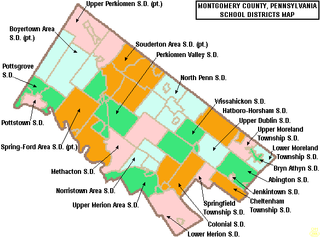
Souderton Area School District is a large, suburban public school district which covers an area of almost 50 square miles (130 km2) in the Montgomery County and Bucks County suburbs of Philadelphia. The district serves the municipalities of Souderton, Telford, Franconia, Lower Salford, Upper Salford, and Salford. By 2021, the population of the district was 47,277. The Souderton Area School District operates 3 secondary schools and 6 elementary schools. A new high school was built on Lower Road and was occupied in September 2009.
Robert E. Lamberton High School was an American high school located in the Overbrook Park section of Philadelphia. The school was closed in 2013 as part of Philadelphia's shutdown of 23 district-run schools. Displaced students were enrolled in Overbrook High School.
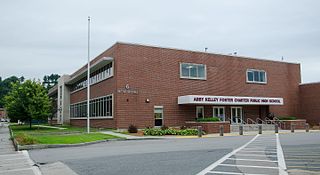
Abby Kelley Foster Charter Public School is a K–12 school located at 10 New Bond St., Worcester, Massachusetts, United States in former Heald Machine Company buildings. The school was founded in 1998.
The Pennsylvania System of School Assessment (PSSA) is a standardized test administered in public schools in the state of Pennsylvania. Students in grades 3-8 are assessed in English language arts skills and mathematics. Students in grades 4 and 8 are also assessed in skills relating to natural science, including the field of data interpretation and analysis. Since 2013, high school students have taken the Keystone Exam in place of the PSSA for their standardized testing. The PSSA's were made by a company in New Jersey. The PSSA is written, owned and administered by Pearson Education. There are reporting categories for each subject which list eligible content to be tested in each grade. Assessment Anchors specify what is considered eligible content for each grade level tested. A Proficient or Advanced level is needed to be able to qualify as passing the PSSA.

The Octorara Area School District is a small, rural–urban fringe, public school district serving Parkesburg, Atglen, Christiana, West Sadsbury Township, Sadsbury Township, West Fallowfield Township, Highland Township, and Londonderry Township in Pennsylvania.
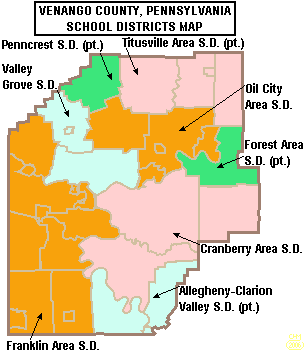
The Cranberry Area School District is a small, rural, public school district which serves the residents of Cranberry Township, Pinegrove Township and Rockland Township in Venango County, Pennsylvania. Cranberry Area School District encompasses approximately 155 square miles (400 km2). According to 2000 federal census data, it serves a resident population of 9,698. In 2009, the per capita income of district residents was $16,307, while the median family income was $39,203 a year. In the Commonwealth, the median family income was $49,501 and the United States median family income was $49,445, in 2010. Per school district officials, in school year 2007-08 the Cranberry Area School District provided basic educational services to 1271 pupils through the employment of 115 teachers, 77 full-time and part-time support personnel, and 7 administrators. In 2006, the 1,308 student population was 98% white, 1% black, 1% Asian, Native American <0.1% and <0.2% Hispanic. The Cranberry Area School District received more than $9 million in state funding, for school year 2007-08.
The Partnership for Assessment of Readiness for College and Careers (PARCC) is a consortium featuring two states, the District of Columbia, the Department of Defense Educational Activity, and the Bureau of Indian Education, that work to create and deploy a standard set of K–12 assessments in Mathematics and English, based on the Common Core State Standards.

Red Land High School is located in Lewisberry, York County, Pennsylvania, United States, and is younger of the two high schools in the West Shore School District. The entire West Shore School District attended Cedar Cliff High School until fall 1965, when Red Land High School opened. Currently, the school has 1,107 students enrolled. In 2019, the school had 70 teachers yielding a student teach ratio of about 16:1.
ACT, Inc. was an American 501(c)(3) nonprofit organization, primarily known for the ACT, a standardized test designed to assess high school students' academic achievement and college readiness. However, in April 2024, it was announced that the company had been purchased by the private equity firm Nexus Capital Management and converted into a for-profit company, raising concerns about transparency and accountability. For the U.S. high school graduating class of 2019, 52 percent of graduates had taken the ACT test; the more than 1.78 million students included virtually all high school graduates in 17 states.










